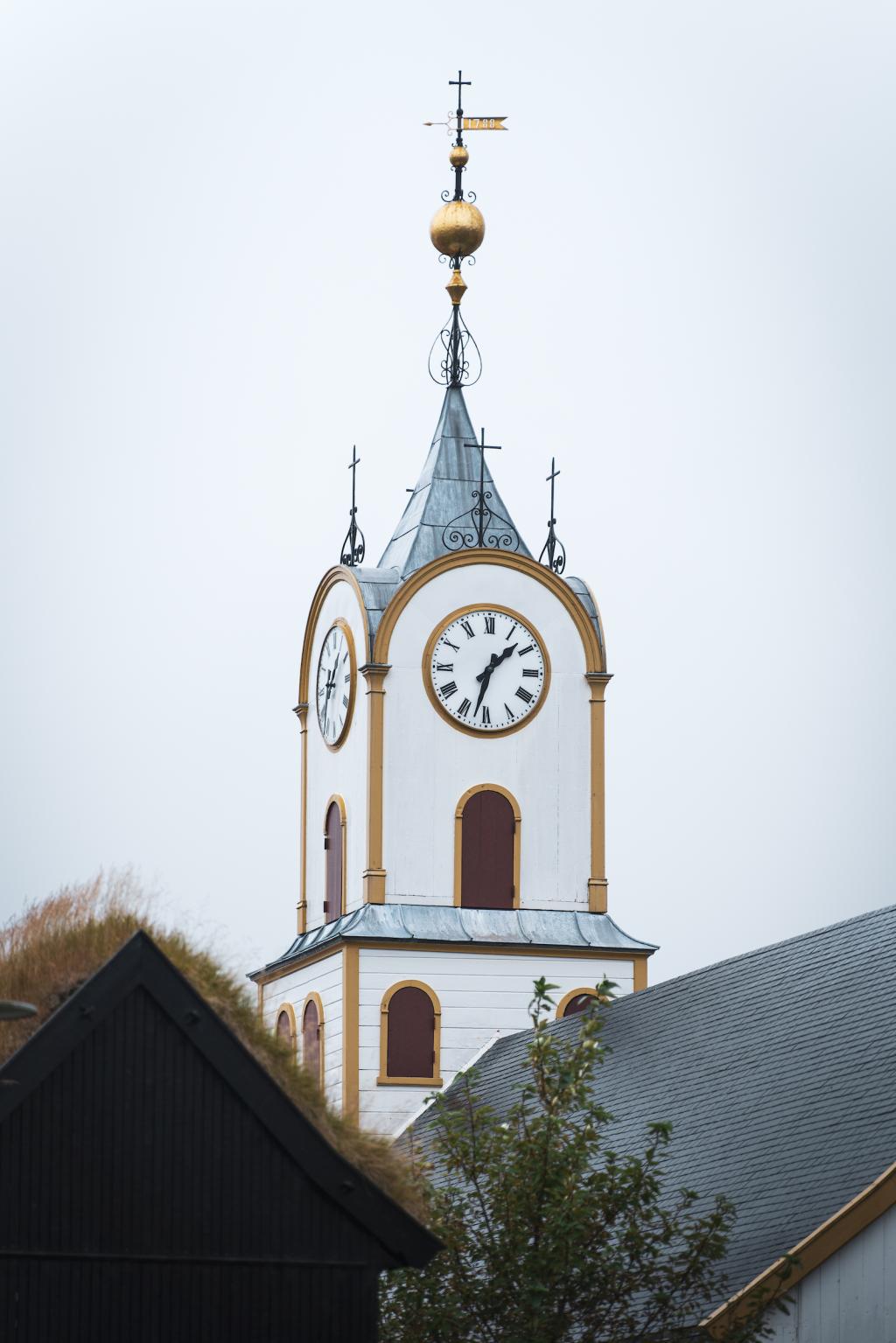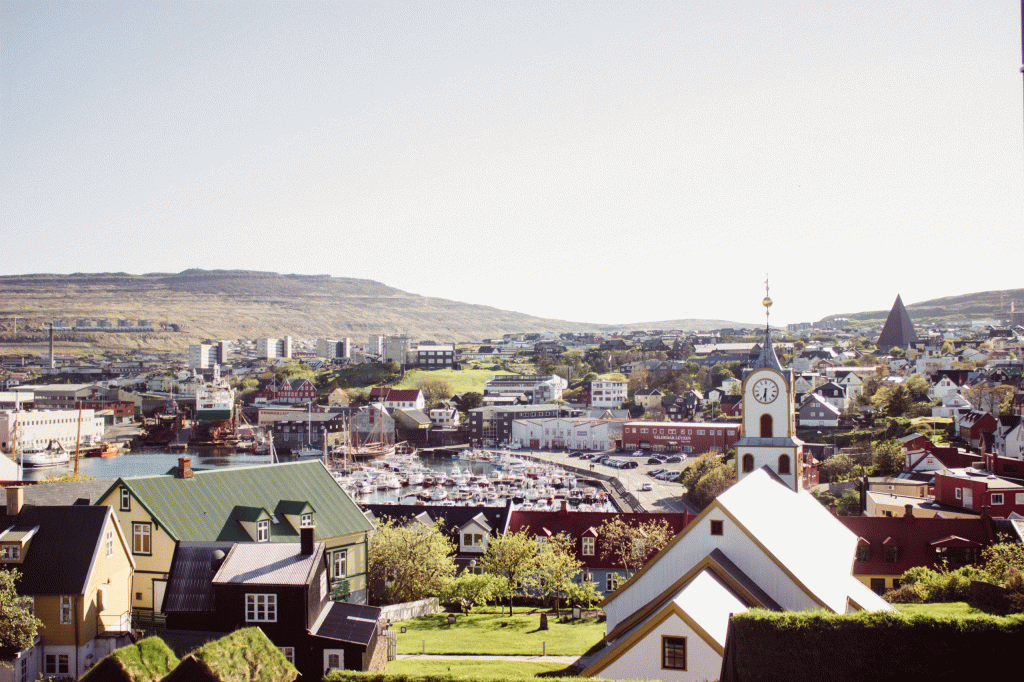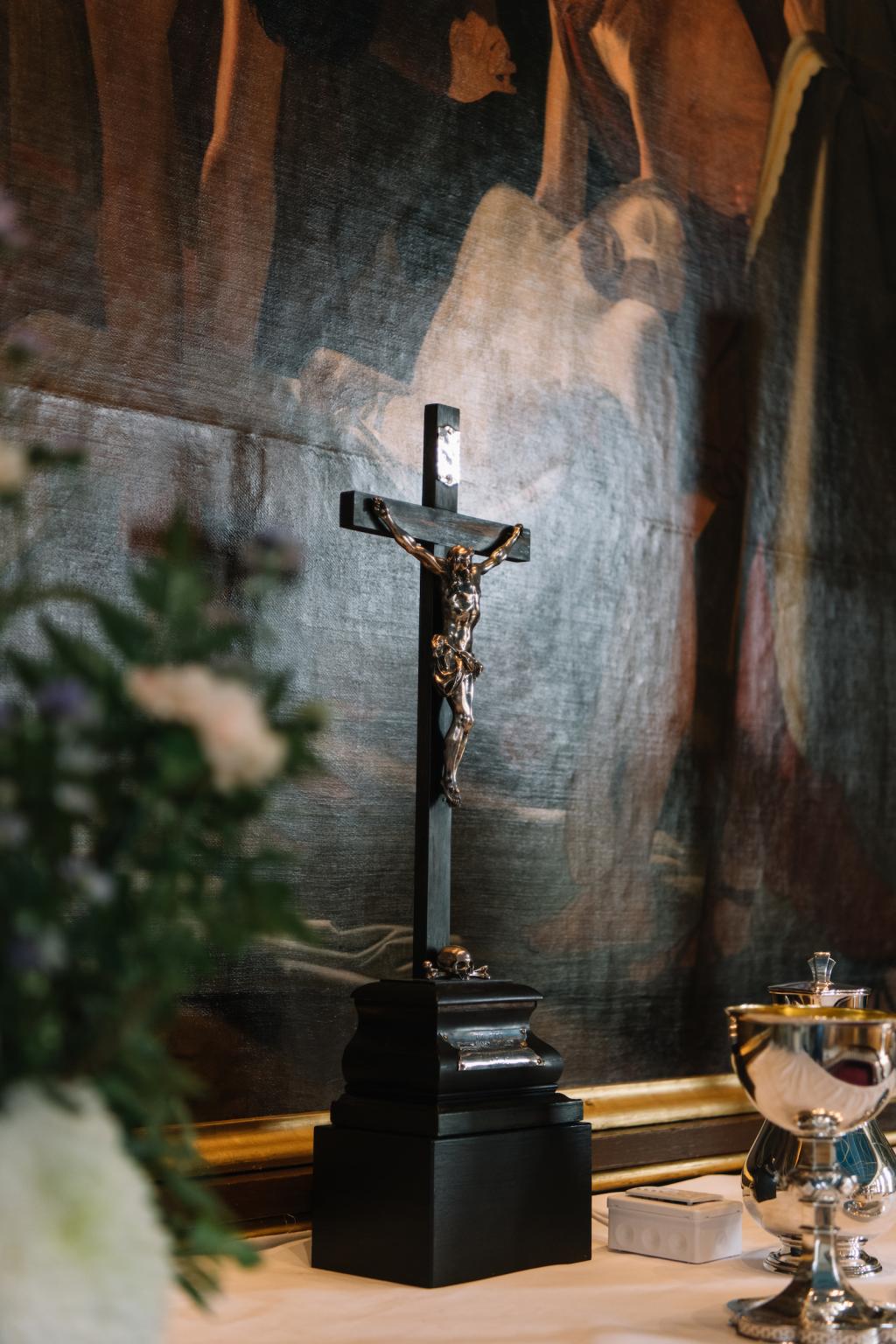You haven’t got any favourites yet
This is where you can collect inspiration, articles, events and places that interest you.
Click the icon on pages and they’ll appear here.
Your favourites
Tórshavn Cathedral
Havnar kirkja is the second oldest preserved church in the Faroes.
Every year on Saint Olav’s Day, 29 July, members of parliament, the prime minister and ministers of the government, priests and government officials march in procession to church service in Havnar kirkja. Immediately after this service, the Løgting, the oldest Parliament in Europe, has its first annual meeting.
Havnar kirkja is the second oldest preserved church in the Faroes. It is kept in its original form with all its objects. On the outside, it is painted white, and the tower has a golden spire. On the spire is a weathercock inscribed with the year 1788, referring to the year the church was initially consecrated. In 1865, the church underwent major repairs, and since then, it has had the appearance it has today. When the Diocese of the Faroe Islands was re established in 1990, Havnar kirkja was appointed Cathedral, and the new office of the dean was founded.
HISTORY AND ARCHITECTURE
The oldest known church in Tórshavn was built in the part of town known as á Reyni in 1609. In the early 1780s, work on a new church started. When the church was completed, Tórshavn had around 600 inhabitants. At that time, the church was located outside Tórshavn.
Today, the same church is deemed to be very centrally located – that is how small Tórshavn was back then. The church was built in the same style as the old wooden churches, only somewhat bigger.
The new church could house the entire parish.
During the renovation of 1865, a vaulted ceiling was added to the church. The vault is pained blue and divided into squares with a bright star in the middle of each square; this is naturally meant to look like the sky. This type of vaulted ceiling is probably inspired by the vaulted ceiling of the Copenhagen Cathedral, Vor Frue Kirke, completed in 1826.
SPECIAL FURNISHINGS
Most of the church decorations are still in their original form.
However, there used to be a rare renaissance pulpit from 1609, which was later sold to the church of Hvalvík. The church has three altarpieces and three church bells. Two model ships and one Faroese model boat are suspended from the vaulted ceiling.
THE THREE ALTARPIECES
The main altarpiece in Havnar kirkja pictures the burial of Jesus. It was painted in 1825 by Danish artist Ditlev Conrad Blunck (1798-1854). The other two altarpieces are older and most likely hung in the old church of 1609, located in á Reyni. One of them is from 1647 and now hangs on the northern wall; its theme is the Last Supper, and it is painted in deep, pure colours directly on wood. The carved and painted renaissance frame is from the same period. The other altarpiece is somewhat younger and hangs on the southern wall above the parish clerk’s seat.
THE THREE BELLS
The church bell of Havnar kirkja has rung since 1952. It weighs a whopping 1450 kilograms and is the largest of its kind in the Faroes. It bears the inscription “Eg ringi hvøll um hav og fjøll. Enn er rúm í Harrans høll. Komið øll” (I ring clear over oceans and peaks. There is still room in the hall of the Lord. Come, all). Two older bells hang in the office – they are Bønarklokkan (the prayer bell) and Norska Løva klokkan (the Norwegian Lion bell).
Bønarklokkan, which was given to the church in 1678, received its name because it was used for the call to prayer every morning and evening. It was also common to ring Bønarklokkan when it was time for children to go to school. It was a long-standing tradition to ring Bønarklokkan when poor people, who could not pay for their funeral, were buried. For that reason, it has also been known as the Poverty bell.
Norska-Løva klokkan is said to have been acquired in 1708, and it came with the ship Norska Løva, which drifted ashore in Lambavík on New Year’s Eve in 1707. The Danish ship was caught in a storm west of the Hebrides and was carried by the current to the Faroe Islands. Fourteen people drowned, and around a hundred were rescued.
The ship’s bell hangs in Havnar kirkja, as well as a model of the ship, made by one or several of the rescued crew members as a thank-you for the help.
The model of Norska Løva hangs in the church, along with Peter and Johannes, a brig received in 1841, and a model rowing boat given to the church as a present in 1964.
Address
J.Paturssonargøta 20
Tórshavn
Opening hours
-
Closed





